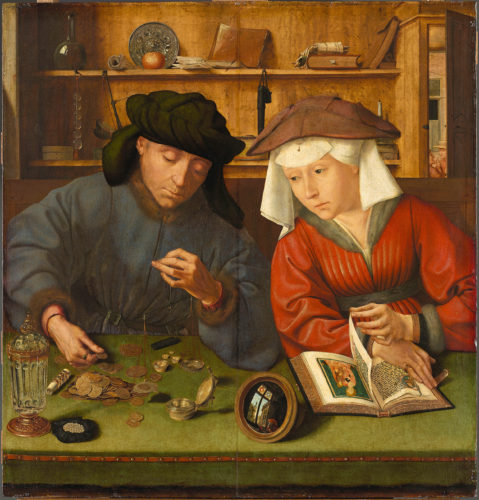The scales that were cleverly tilted in The Epitaph for Good Money, and foregrounded for symbolic capital in Jost Amman’s Allegory of Commerce, are presented here as tokens and agents of worldliness. The money-lender weighs up coins, pearls and pieces of gold, and his wife gets distracted from her reading of a sacred book depicting the Virgin and child. While the sensuality of the pearls and the glitter of the gold suggest lust and luxury, the scene is framed by reminders of mortality: the apple on the shelf recalls forbidden knowledge and the snuffed out candle is resonant of the futility of earthly desires. In this context, the weighing scales take on the Christian symbolism of the scales of the Last Judgment and reinforce the moral message the scene conveys, albeit through exquisitely painted details of profane life. The mirror in the foreground embodies this paradox: on the one hand it a conventional symbol of human vanity; but on the other, it is a lavishly painted version of a much-loved device of Flemish art, linking the allegorical scene indoors with the world outside, where a figure stands at a beautiful stained glass window, perhaps inscribing the artist in his work. Though the painter is ostensibly projecting a righteous knowledge, his painting knows the vitality of still life, and even absorbs the illuminated codex into its display of vivid accessories on the table and the shelf.
© 2019 University of Cambridge and Fitzwilliam Museum











